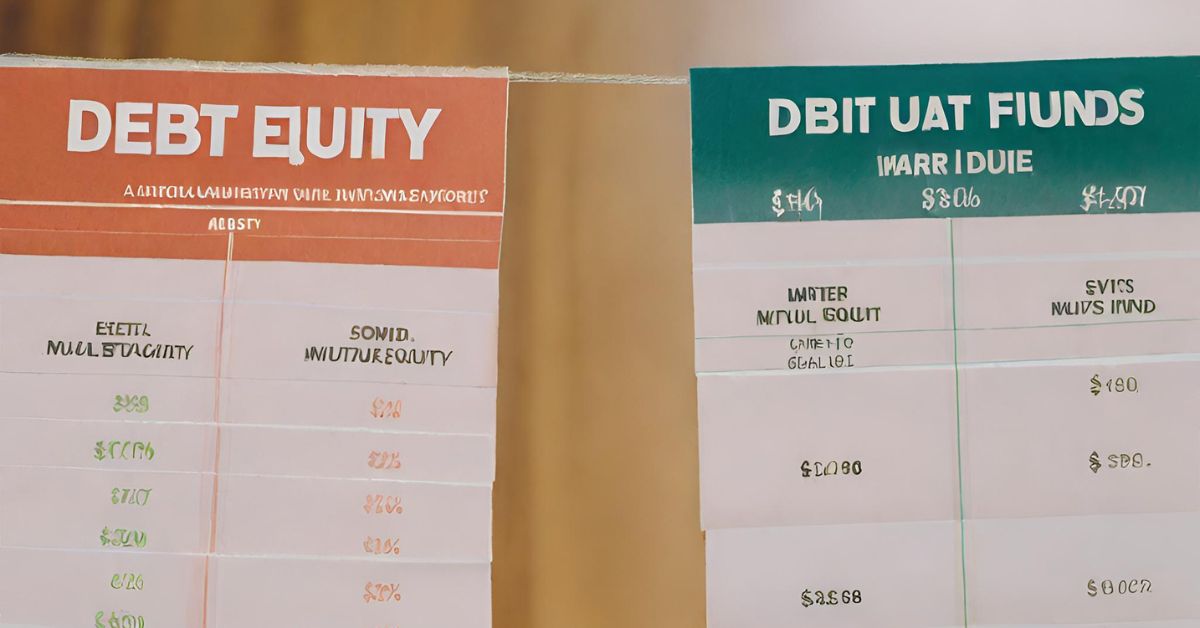Alternative Investment Funds (AIFs) are growing into a more well-liked option in the finance and investment world for investors looking for expansion outside of traditional asset classes like stocks, bonds, and cash equivalents. With their exposure to non-traditional assets, AIFs provide investors with a variety of investment strategies that may increase returns while reducing risk. We will examine the types, features, advantages, and factors to consider for investors as we look into the complexities of alternative investment funds in this deep guide.
Alternative Investment Funds: What Are They?
Investing vehicles that differ from traditional investment paths like stocks, bonds, and mutual funds are known as alternative investment funds, or AIFs. They provide investors with exposure to non-traditional markets and opportunities by covering a wide range of assets and investment strategies. Professional fund managers or investment firms with experience in niche markets like venture capital, real estate, commodities, infrastructure, private equity, and hedge funds usually oversee AIFs.
Types Of Alternative Investment Funds
1. Hedge Funds: Probably the most well-known category of AIFs is hedge funds. They use a variety of investment strategies, such as statistical trading, global macro, event-driven, and long-short equity. Hedge funds use both long and short positions in a range of financial instruments in an effort to produce positive returns independent of market conditions. To increase profits and reduce risks, they frequently employ leverage and derivatives.
2. Private equity funds: These funds make direct investments in privately held businesses, frequently getting a sizeable ownership position. These funds usually focus on businesses that have room to grow and work to increase the value of those businesses through strategic initiatives, reorganizations, and operational upgrades. Buyouts, venture capital, growth capital, distressed assets, and other tactics are among the strategies that private equity funds may invest in. By paying dividends or selling their investments at a higher price, they hope to make money.
3. Real Estate Investment Trusts (REITs): These entities combine investor capital to purchase income-producing real estate assets like office buildings, apartment buildings, and infrastructure projects. REITs provide investors with exposure to the real estate market without requiring them to directly own or manage properties. They can be publicly traded or non-traded. Generally, REITs pay dividends to their shareholders in excess of their taxable income.
4. Venture Capital Funds: Funds dedicated to financing startups and early-stage businesses with promising growth prospects are known as venture capital funds. Typically, these funds make investments in cutting-edge companies in the biotechnology, technology, healthcare, and other industries. In return for equity ownership, venture capital funds may offer startups seed money, early-stage funding, or later-stage growth capital. Through their investments in profitable businesses that go public or are acquired by bigger companies, they hope to reap sizable returns.
5. Commodities Funds: These funds engage in the trading of commodity futures contracts or the physical purchase of commodities like gold, silver, oil, agricultural products, and industrial metals. These funds might aim to capitalize on changes in commodity market prices and give investors access to assets that offset inflation. To lower risk, commodities funds can be concentrated on a single commodity or diversified across a number of commodities.
6. Infrastructure Funds: These funds are used to finance the construction of public infrastructure projects, including telecommunications networks, airports, energy facilities, and toll roads. These funds provide steady cash flows over an extended period of time and are usually funded by user fees or government contracts. Investors looking for reliable income streams and capital gains from important infrastructure assets may find infrastructure funds appealing.
7. Distressed Debt Funds: Investing in financially troubled companies’ debt securities, often at a discount to face value, is what distressed debt funds do. Distressed bonds, bank loans, and other debt instruments of businesses going through bankruptcy, restructuring, or other difficulties may be bought with these funds. Distressed debt funds may actively participate in the restructuring process in order to optimize returns. Their goal is to profit from the recovery or restructuring of distressed assets.
Characteristics Of Alternative Investments Funds
1. Diverse Asset Classes: AIFs offer exposure to a wide range of non-traditional asset classes beyond stocks, bonds, and cash equivalents. These may include private equity, hedge funds, real estate, venture capital, commodities, infrastructure, and distressed debt. By investing in diverse asset classes, AIFs aim to enhance portfolio diversification and potentially generate returns uncorrelated with traditional markets.
2. Active Management: AIFs are typically actively managed by professional fund managers or investment firms with expertise in specialized areas. These managers employ sophisticated investment strategies tailored to the specific objectives of the fund, such as generating alpha, managing risk, or capitalizing on market inefficiencies. Active management allows AIFs to adapt to changing market conditions and exploit investment opportunities across various asset classes.
3. Limited Liquidity: Many AIFs have longer investment horizons and limited liquidity compared to traditional investment vehicles like mutual funds or exchange-traded funds (ETFs). Investors in AIFs may face lock-up periods during which they cannot redeem their investments, and redemption terms may be subject to restrictions or penalties. This illiquidity is often a trade-off for accessing potentially higher returns and alternative investment strategies.
4. Higher Risk-Reward Profile: AIFs typically exhibit higher levels of risk compared to traditional investments, but they also offer the potential for higher returns. Alternative asset classes such as private equity, hedge funds, and venture capital can be inherently riskier due to factors such as illiquidity, leverage, market volatility, and business model complexity. Investors in AIFs must have a higher risk tolerance and a longer investment horizon to withstand market fluctuations and potential losses.
5. Sophisticated Investors: AIFs are primarily designed for accredited or institutional investors who possess the financial sophistication and risk tolerance to invest in alternative asset classes. Accredited investors are individuals or entities that meet certain income or net worth thresholds set by securities regulators, indicating their ability to understand and bear the risks associated with alternative investments. Institutional investors, such as pension funds, endowments, and sovereign wealth funds, are also significant participants in the AIF market due to their long-term investment horizons and larger capital allocations.
6. Customized Investment Strategies: AIFs can offer customized investment strategies tailored to the specific needs and preferences of investors. Fund managers may structure AIFs to focus on specific asset classes, sectors, geographic regions, or investment themes. This customization allows investors to align their investment objectives, risk tolerance, and time horizon with the fund’s strategy, potentially enhancing portfolio outcomes and diversification benefits.
7. Regulatory Oversight: AIFs are subject to regulatory oversight by relevant authorities in the jurisdictions where they operate. Regulatory frameworks vary depending on the type of AIF and the jurisdiction, but they typically include disclosure requirements, investor protections, and compliance standards aimed at safeguarding investor interests and maintaining market integrity. Regulatory oversight helps enhance transparency, accountability, and investor confidence in the AIF market.
Considerations for Investors
1. Risk Management: Investors should carefully assess the risks associated with each AIF, including market risk, liquidity risk, credit risk, and operational risk, and ensure that they align with their risk tolerance and investment objectives.
2. Due Diligence: Conduct thorough due diligence on the fund manager, investment strategy, track record, fee structure, and terms and conditions before investing in an AIF to mitigate the risk of poor performance or fraud.
3. Lock-Up Periods: Some AIFs may impose lock-up periods during which investors cannot redeem their investments, requiring careful consideration of liquidity needs and investment time horizon.
4. Fees and Expenses: AIFs often charge management fees, performance fees, and other expenses, which can erode returns over time. Investors should evaluate the fee structure and consider the overall cost-effectiveness of the investment.
5. Regulatory Environment: AIFs are subject to regulation by relevant authorities in the jurisdictions where they operate, and investors should be aware of regulatory compliance requirements and potential regulatory changes that may impact the investment.
Alternative Investment Funds (AIFs) provide investors with access to a wide range of non-traditional assets and investment strategies, allowing them to widen their portfolios and increase returns. While AIFs can provide major advantages, they also carry increased risks and complexities that require careful consideration and hard work. Understanding the characteristics, benefits, and considerations of AIFs allows investors to make informed decisions and effectively apply them into their investment portfolios. As with any investment, looking for advice from financial professionals and conducting extensive research are essential for properly understanding the Alternative Investment Fund nature.
Also Read: NFO: Meaning, Work, Benefits, Disadvantages and Factors





